Diabetes, no wonder, is a great problem world wide. India alone has 77 million diabetics. Managing diabetes can be challenging, but one of the best ways to keep your blood sugar levels under control is by following a good diet plan. This Complete Indian Diabetic Diet Plan is specifically made for people in India, and it covers both vegetarian and non-vegetarian meals. It’s designed to be easy to follow, helping you eat better while keeping your diabetes in check.
What is Diabetes, and Why is a Good Diet Important?
Diabetes is a condition where your body does not handle sugar well. Either it does not make enough insulin, or it can’t use the insulin it produces. Insulin helps move sugar from your blood into your cells, where it’s used for energy. When this process does not work, too much sugar stays in your blood, causing problems like heart disease, kidney damage, or nerve damage .
A good diabetic diet chart helps control the amount of sugar in your blood. It focuses on eating the right types of food, limiting sugar, and making sure you are getting enough nutrients to stay healthy. This is especially important in India, where meals are rich in carbohydrates, which can raise blood sugar levels.

Glycemic Index (GI) Chart for Indian Foods
The Glycemic Index (GI)[1] is a way to rank foods based on how quickly they raise blood sugar levels. This is important for people with diabetes, as choosing low-GI foods can help keep blood sugar stable. Foods are classified into three groups:
- Low GI (55 or less): These foods digest slowly and cause a gradual rise in blood sugar.
- Medium GI (56-69): These foods cause a moderate rise in blood sugar.
- High GI (70 or more): These foods can cause a quick spike in blood sugar.
In Indian cooking, many foods are high in carbohydrates. Understanding which foods have lower GI values can help you manage diabetes better. Here’s a simple Glycemic Index chart for Indian foods to help you make smart choices.
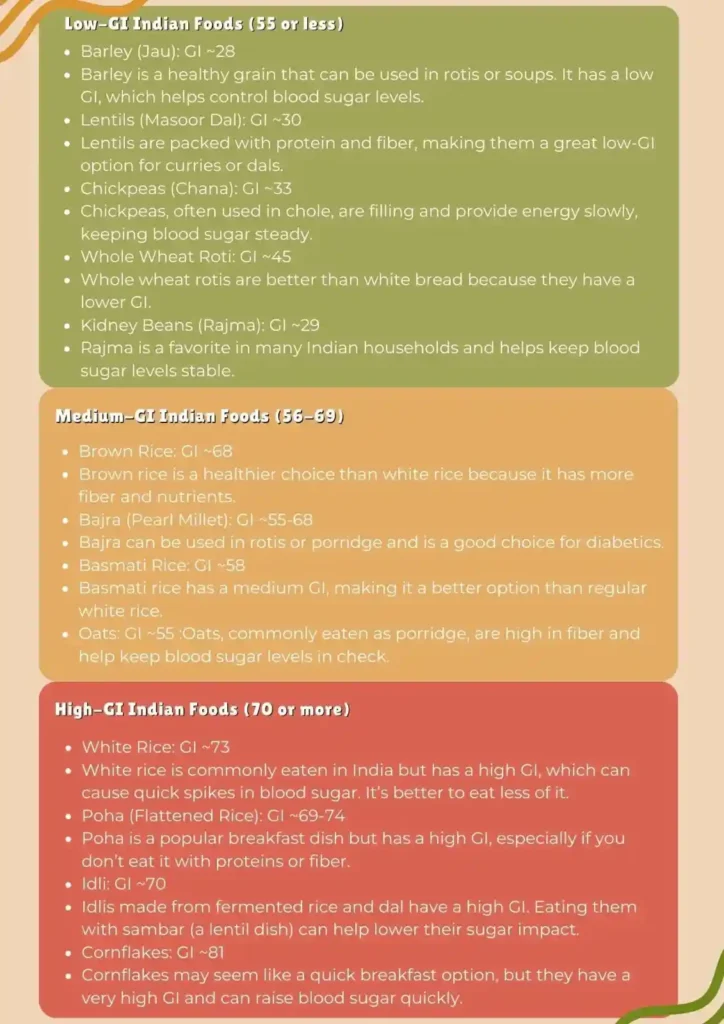
For a healthy, Complete Indian Diabetic Diet Plan, there are a few important food groups to focus on:
- Carbohydrates: Carbohydrates turn into sugar in your body. Choose whole grains like brown rice, oats, and millet instead of white rice or bread.
- Proteins: These are important for building and repairing your body. Choose lean proteins like paneer, tofu, lentils, chicken, and fish.
- Healthy Fats: Fats are also necessary, but make sure they are healthy ones, like nuts, seeds, and olive oil.
- Fiber: Foods high in fiber, like vegetables, fruits, and whole grains, help keep your blood sugar steady .
Weekly Diet Chart for Diabetic Patients (Veg & Non-Veg)
This Indian diabetic diet chart is designed to provide balanced, nutritious meals for each day of the week. It’s based on portion control and includes both vegetarian and non-vegetarian options.
These all will be images. Each day will be a different image
Day 1
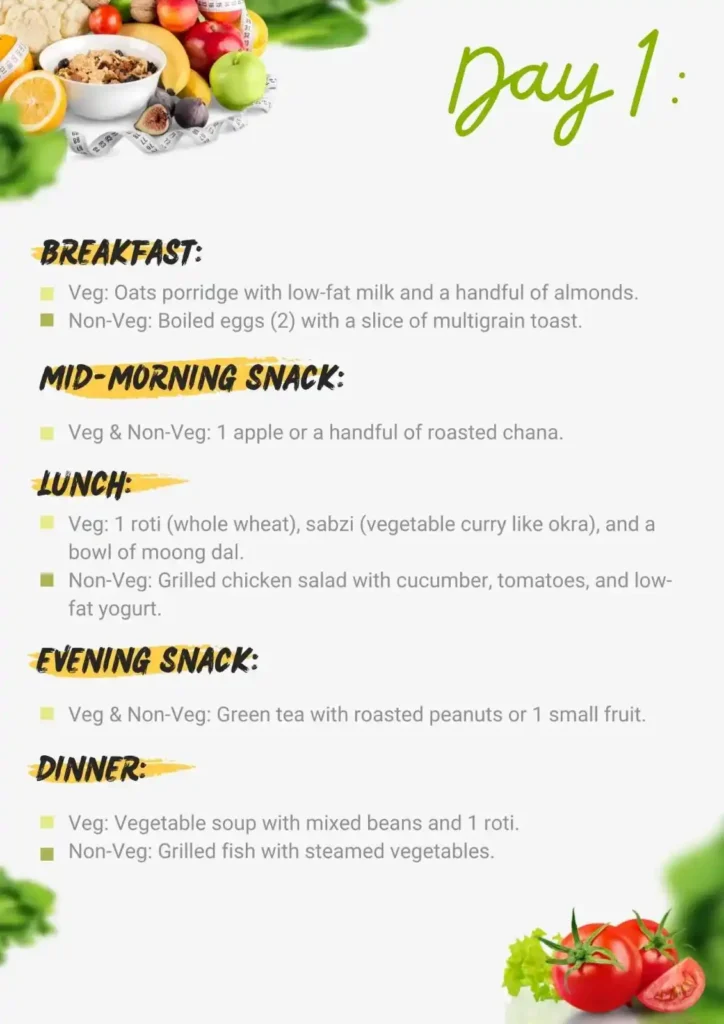
Day 2
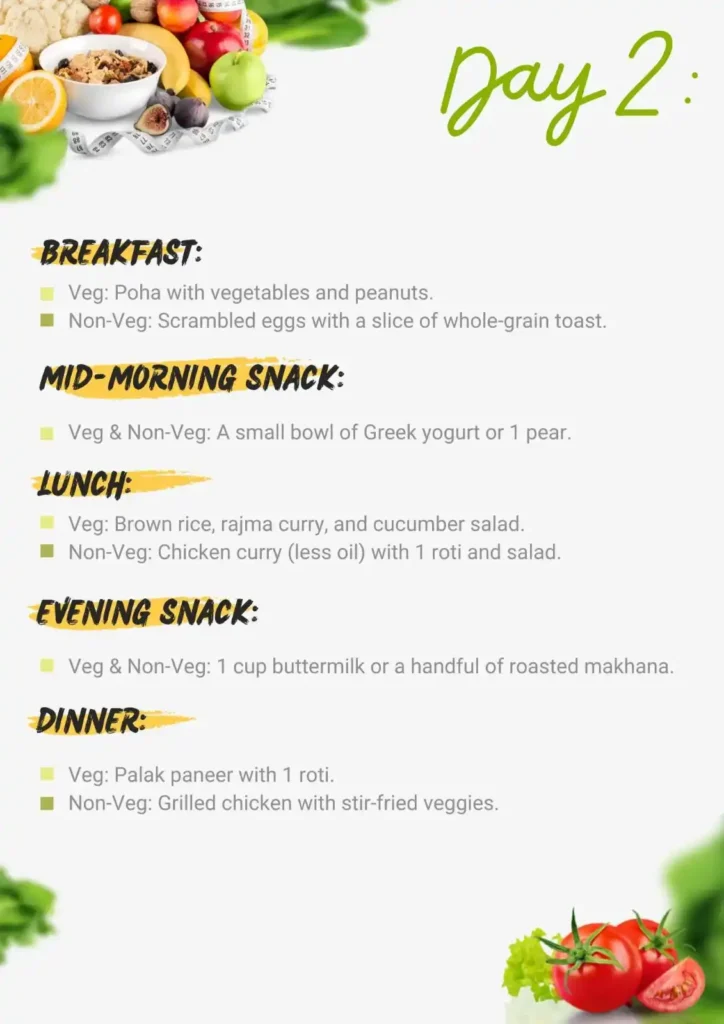
Day 3
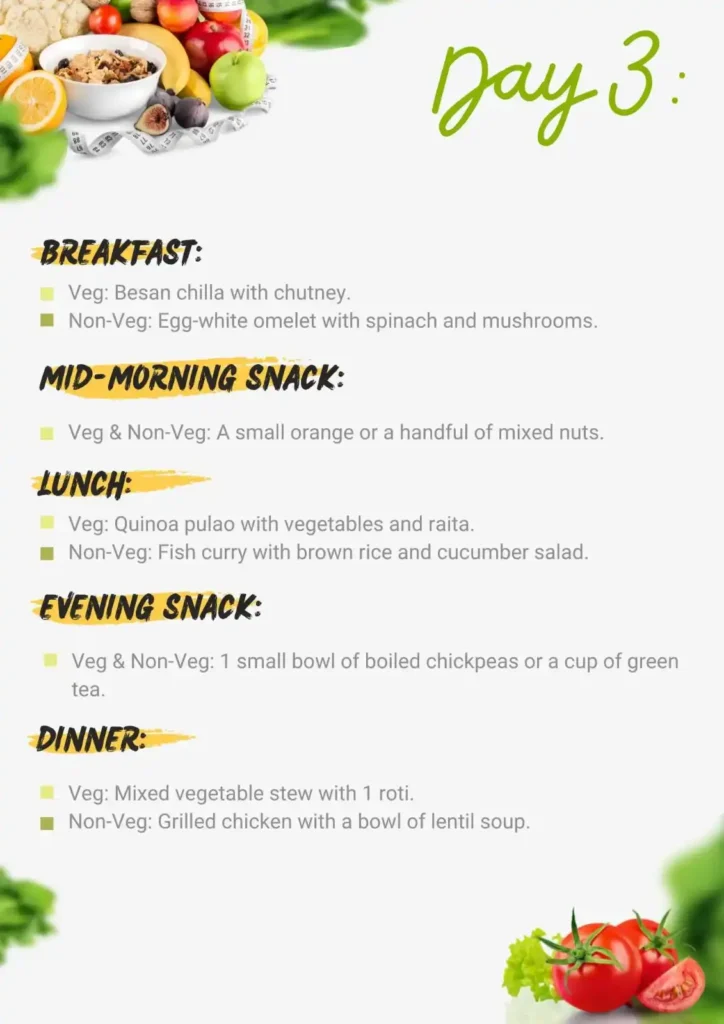
Day 4
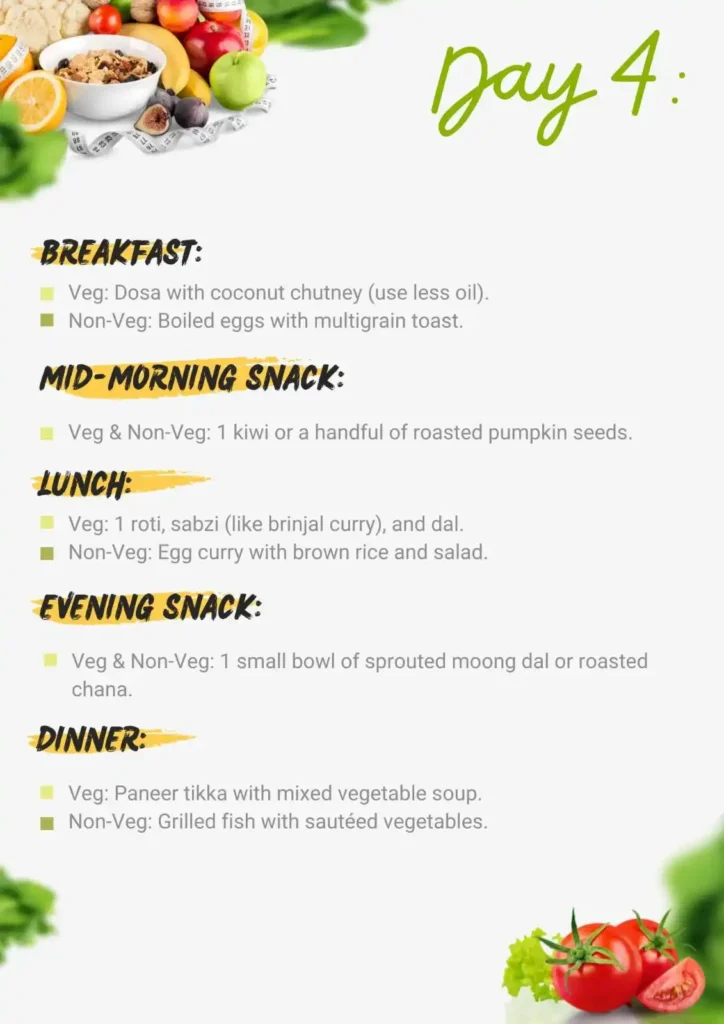
Day 5
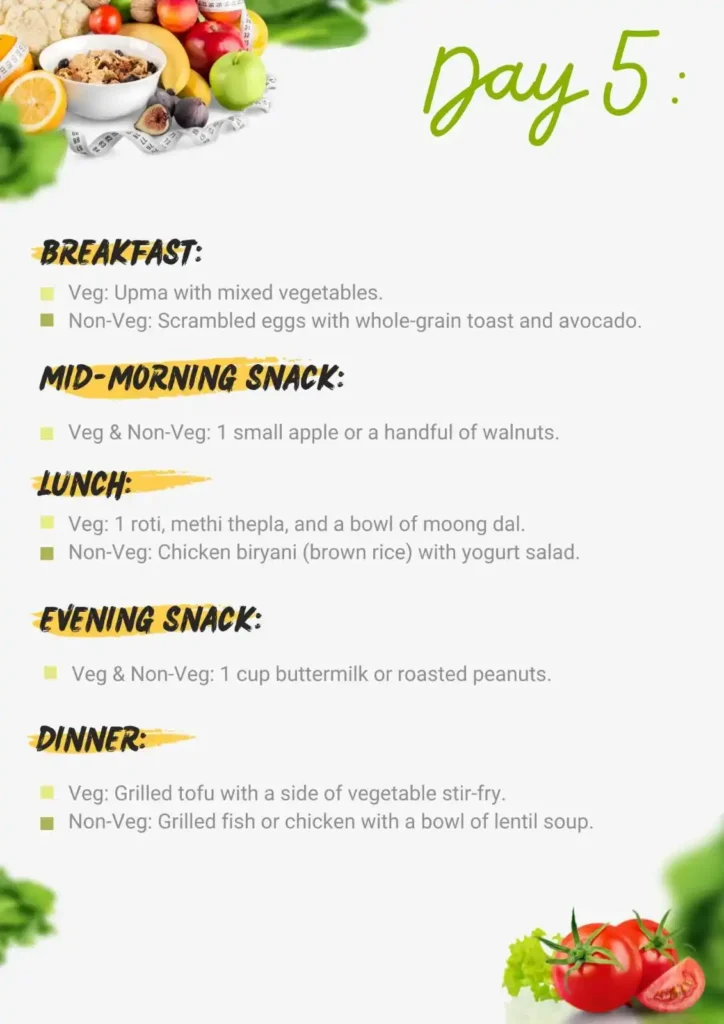
Day 6
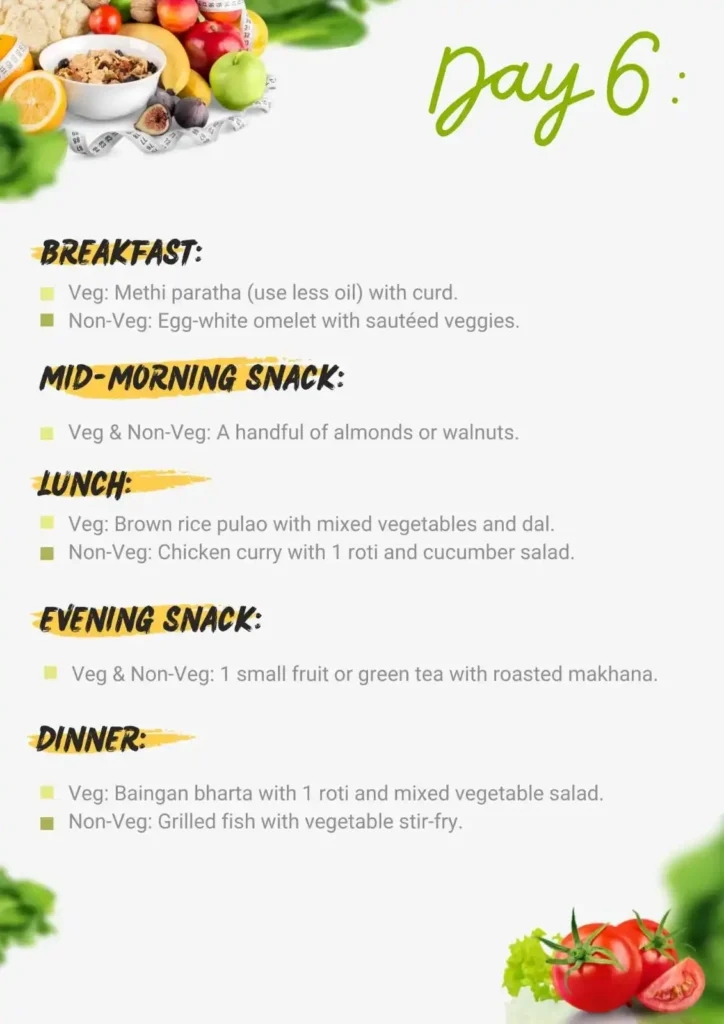
Day 7
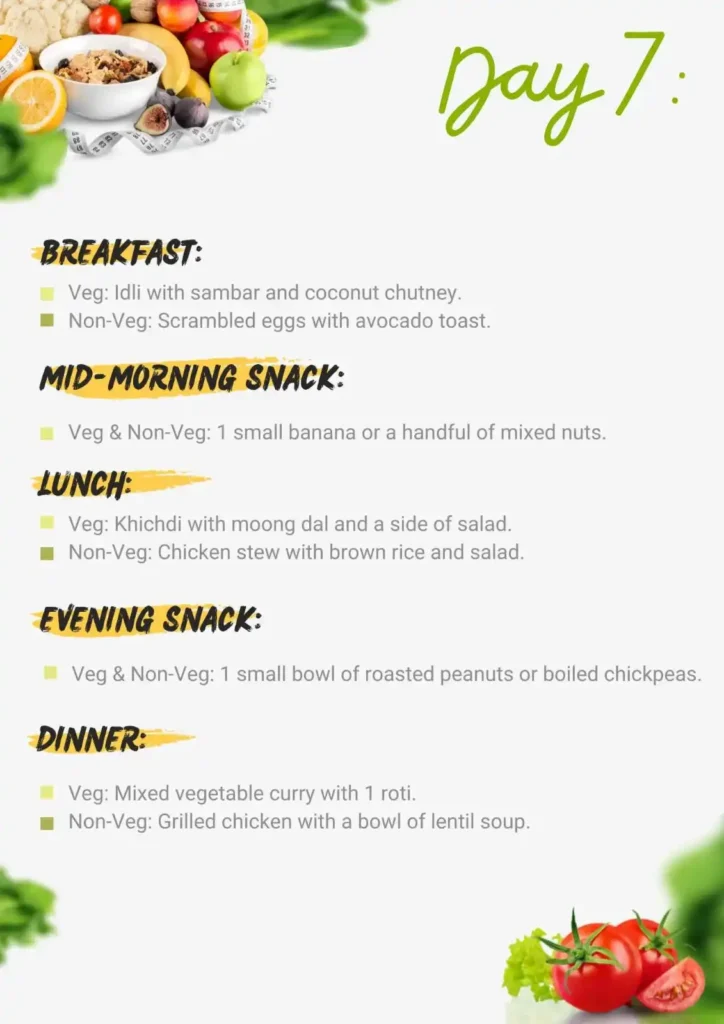
What Foods Are Best for Diabetics?
When you are following this Complete Indian Diabetic Diet Plan, it’s important to eat foods that help keep your blood sugar under control.
Foods You Should Eat:
- Whole Grains: Brown rice, millet, oats, and quinoa.
- Vegetables: Spinach, methi, broccoli, okra, and bitter gourd.
- Proteins: Paneer, tofu, lentils, chicken, fish.
- Fruits: Apples, berries, guava, and papaya—fruits that don’t raise blood sugar too quickly.
- Healthy Fats: Nuts, seeds, olive oil, and avocados.
Foods You Should Avoid:
- Refined Carbohydrates: White rice, white bread, and sugary cereals.
- Sugary Foods: Sweets, pastries, and sugary drinks.
- Processed Foods: Fast food, fried foods, and packaged snacks.
- High-Glycemic Fruits: Bananas, grapes, and watermelon, which can spike blood sugar.
Portion Control Visual Guide for Common Indian Dishes
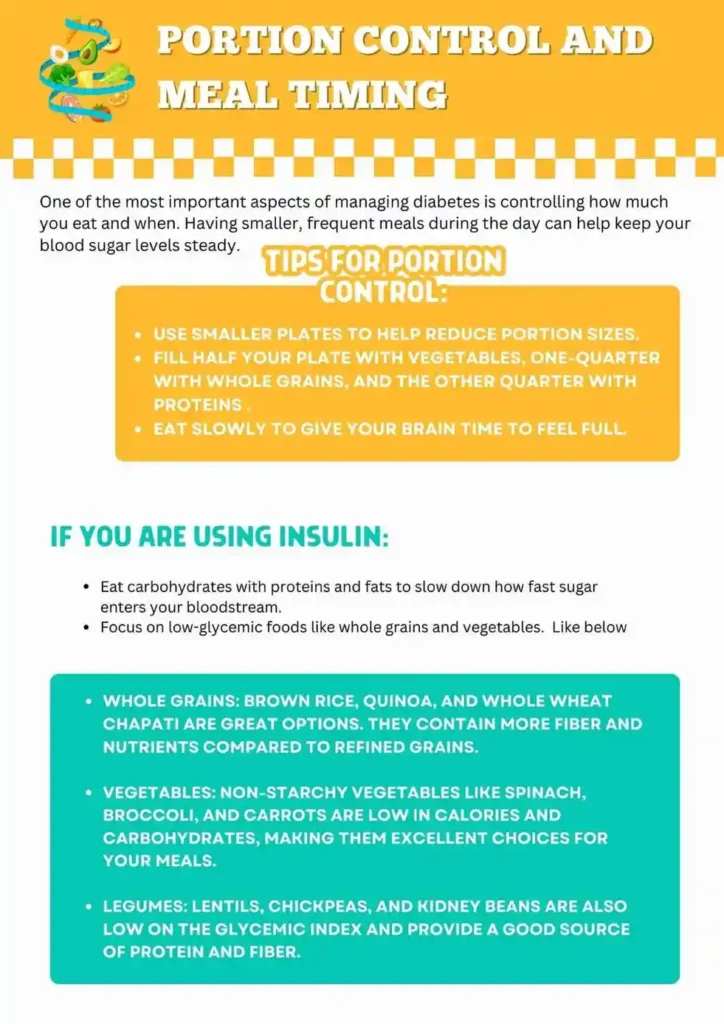
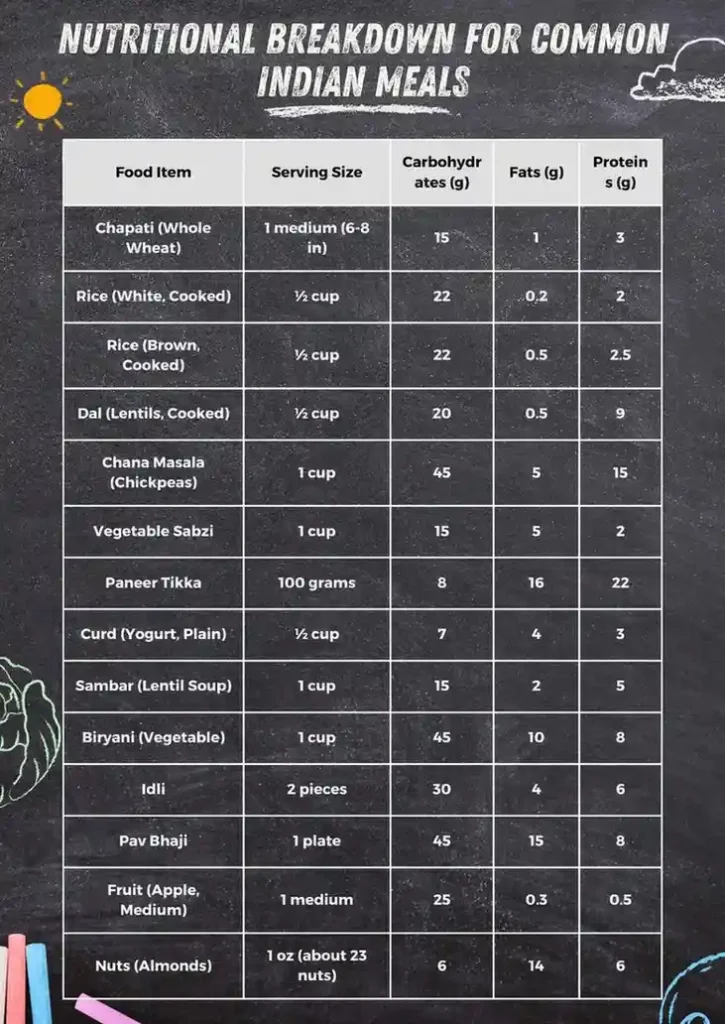
How to Personalize Your Diet?
Since every diabetic person is different, you can adjust this diabetic diet chart to suit your individual needs. Here’s how:
1. For Weight Loss:
- Control your portion sizes.
- Eat foods that are low in calories but high in nutrients, like vegetables and lean proteins
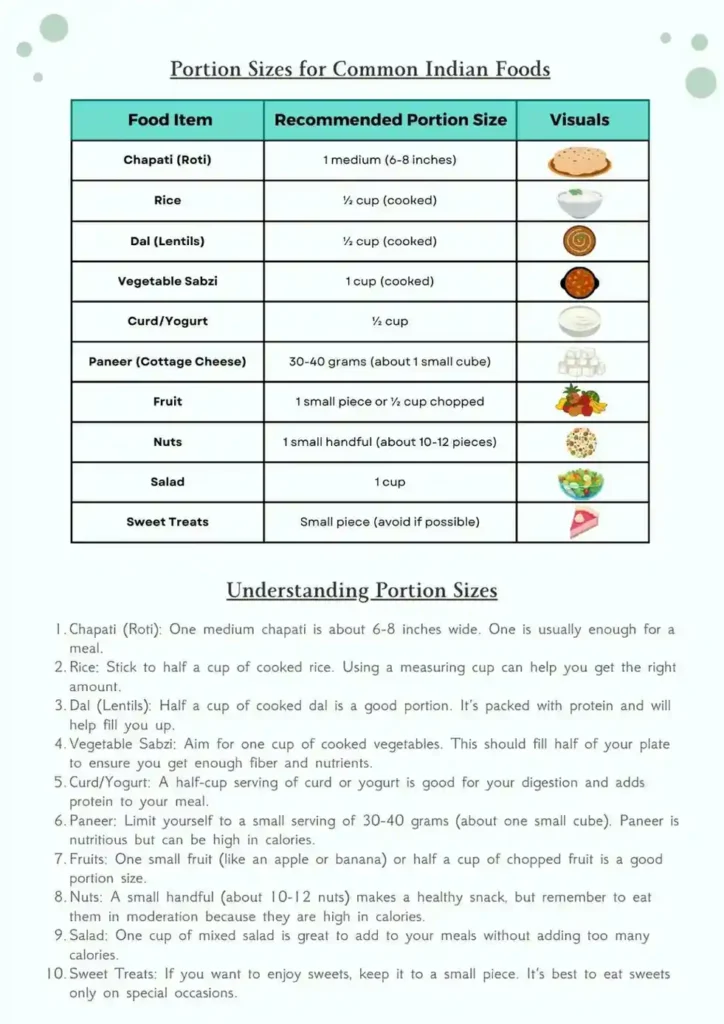
2. If you are Using Insulin:
- Eat carbohydrates with proteins and fats to slow down how fast sugar enters your bloodstream.
- Focus on low-glycemic foods like whole grains and vegetables. Like below
3. For Heart Health:
- Choose heart-healthy fats like olive oil, nuts, seeds, and avocado.
- Reduce salt intake by avoiding processed foods and not adding extra salt to your meals.
Exercise: An Essential Part of Managing Diabetes
In addition to following the Complete Indian Diabetic Diet Plan, regular exercise is important. Physical activity helps you use insulin better, lowers blood sugar levels, and helps you maintain a healthy weight.
Simple Exercises to Try:
- Walking: Even 30 minutes a day can help manage diabetes.
- Yoga: Helps improve flexibility and control blood sugar levels.
- Strength Training: Strength training Builds muscle, which helps your body use sugar more efficiently.
Easy Meal Planner Tool for Diabetic Diet
To help you manage your meals better, we’ve created a simple meal planner. This tool will make it easy for you to plan your meals for the week based on the suggestions from our article. With this planner, you can stay on track with your diet while enjoying a variety of Indian foods.
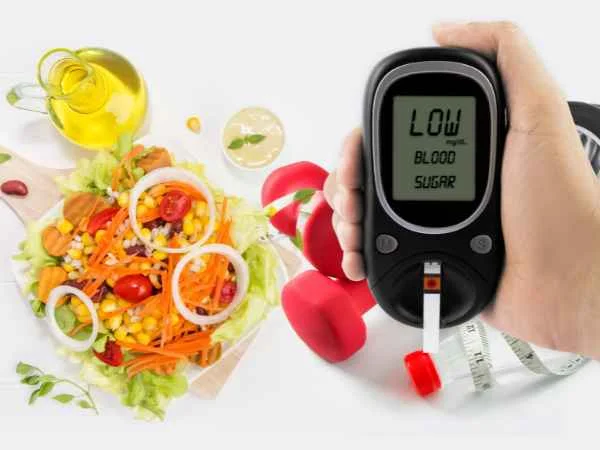
How to Use the Meal Planner?
- Download the Meal Planner Template: Click the link below to download a PDF meal planner template. This will help you organize your meals for each day of the week.
- Plan Your Meals: Write down your meals for breakfast, lunch, dinner, and snacks. You can use the Nutritional Value Table to find healthy foods that are good for managing diabetes.
- Watch Portion Sizes: Keep an eye on how much you eat to help control your carbohydrate intake.
- Be Flexible: Feel free to swap meals or change ingredients based on what you like or what you have at home. Just make sure to keep a good balance in your nutrition.
- Stay Hydrated: Don’t forget to drink water or herbal tea during the day to stay hydrated.
Weekly Meal Planner Template
Download Your Weekly Meal Planner PDF (you have to make this; search meal planner template, and make it for a week)
Conclusion
This diet chart for diabetic patients offers a balanced, flexible plan that includes both vegetarian and non-vegetarian options. It focuses on whole grains, proteins, healthy fats, and portion control to keep blood sugar levels in check. By following this Complete Indian Diabetic Diet Plan, you can enjoy delicious, healthy meals while managing your diabetes.
Remember, it’s important to consult with a healthcare provider or dietitian before making any major changes to your diet. They can help you adjust this diet plan for diabetes patients in India to suit your individual health needs.
Frequently Asked Questions
Q1. Can diabetics eat rice?
Ans- Yes, diabetics can eat rice, but it’s better to choose brown rice instead of white rice. Brown rice has more fiber and nutrients, which can help keep blood sugar levels steady. Just remember to control your portion sizes.
Q2. Which Indian foods help control blood sugar?
Ans- Foods like whole grains (such as brown rice and whole wheat chapati), lentils (dal), vegetables (like spinach and broccoli), and healthy fats (like nuts and seeds) are good for controlling blood sugar. These foods are low in sugar and provide essential nutrients.
Q3. Is ghee good for diabetics?
Ans- Ghee can be okay for diabetics in small amounts. It has healthy fats and can be better than processed oils. However, since ghee is high in calories, it’s important to use it in moderation.
Q4. Can I eat fruits if I have diabetes?
Ans- Yes, fruits can be part of a diabetic’s diet. Choose whole fruits like apples, berries, and oranges. Be careful with portion sizes and try to avoid fruit juices, which can raise blood sugar quickly.
Q5. What snacks are good for diabetics?
Ans- Healthy snacks for diabetics include nuts, yogurt, and raw veggies with hummus. These options are low in sugar and high in fiber or protein, making them great choices.
Q6. Is it okay to skip meals if I have diabetes?
Ans- It’s not usually a good idea to skip meals if you have diabetes. Eating regular meals helps keep blood sugar levels stable. If you can’t have a meal, try to eat a healthy snack instead.
Q7. How many carbohydrates should a diabetic eat each day?
Ans- The number of carbohydrates can vary for each person, but a common suggestion is about 45-60 grams of carbohydrates per meal. It’s best to talk to a healthcare professional for advice tailored to your needs.
Q8. Are sweeteners safe for diabetics?
Ans- Artificial sweeteners, like stevia or sucralose, can be safe for diabetics when used in moderation. They provide sweetness without significantly affecting blood sugar levels.
Q9. Can I drink alcohol if I have diabetes?
Ans- Diabetics can drink alcohol in moderation. It’s important to watch your blood sugar levels and choose drinks that are low in sugar. Always check with a healthcare provider before drinking alcohol.
Q10. What is the best time to eat to manage diabetes?
Ans- Eating regular meals and snacks throughout the day is best for keeping blood sugar levels steady. The timing can vary for each person, but being consistent is important. Talk to your healthcare provider about a meal schedule that works for you.
References
We value truthful content. 1 sources were referenced during research to write this content.


